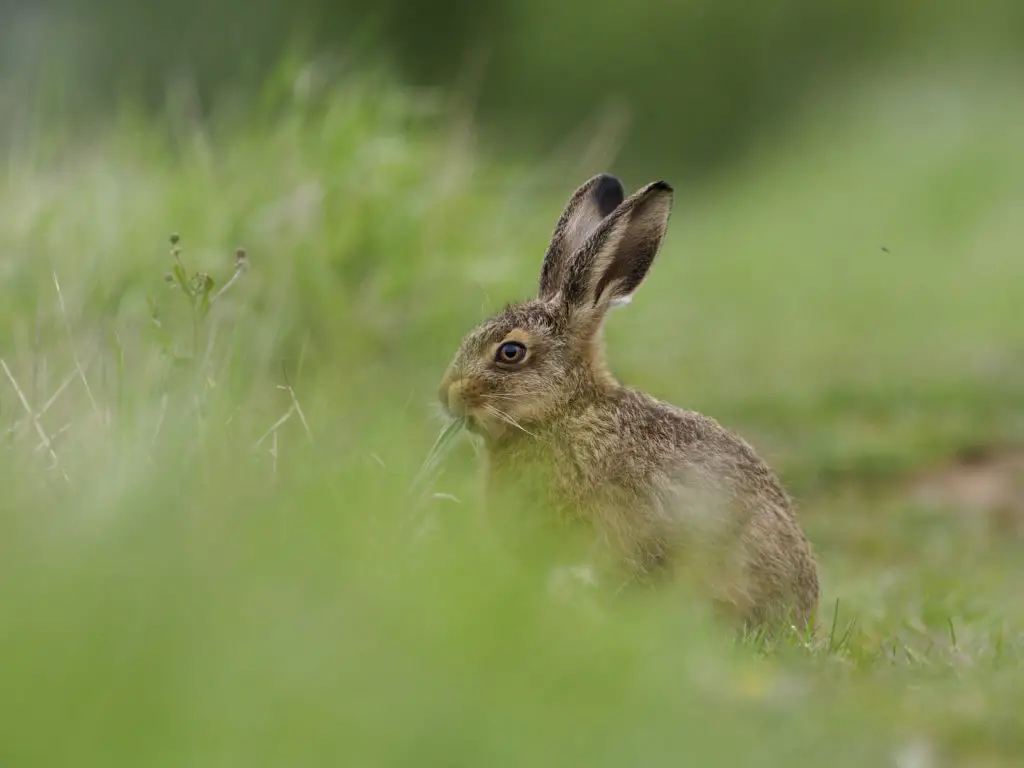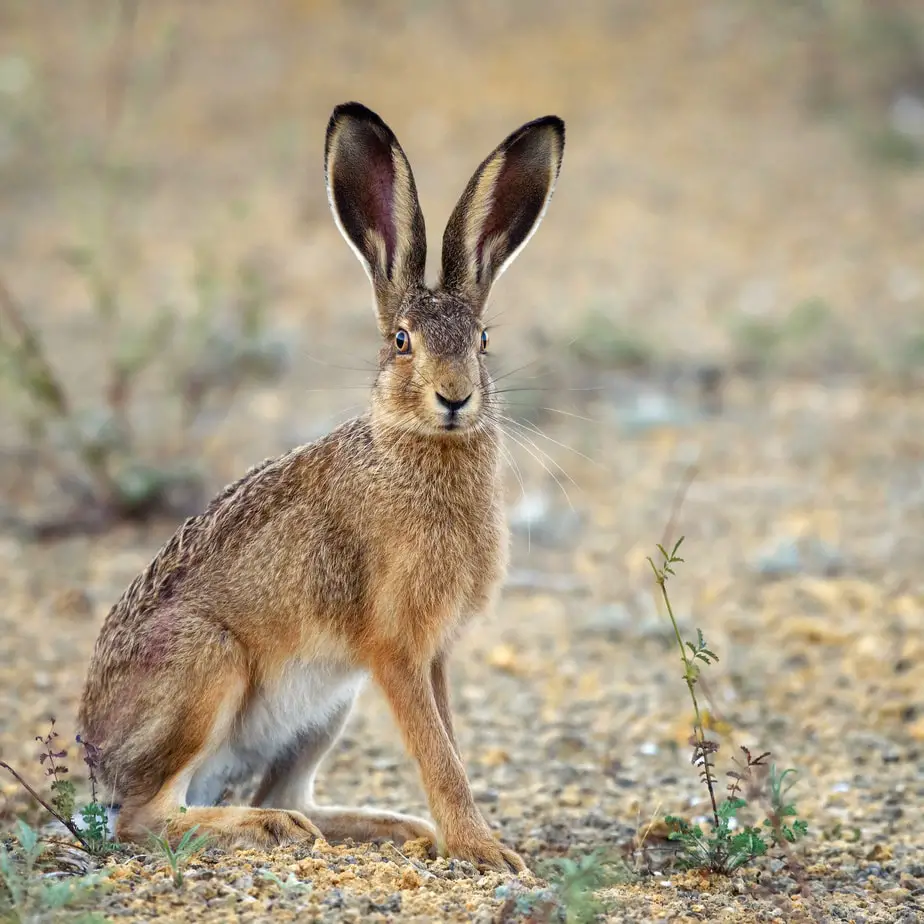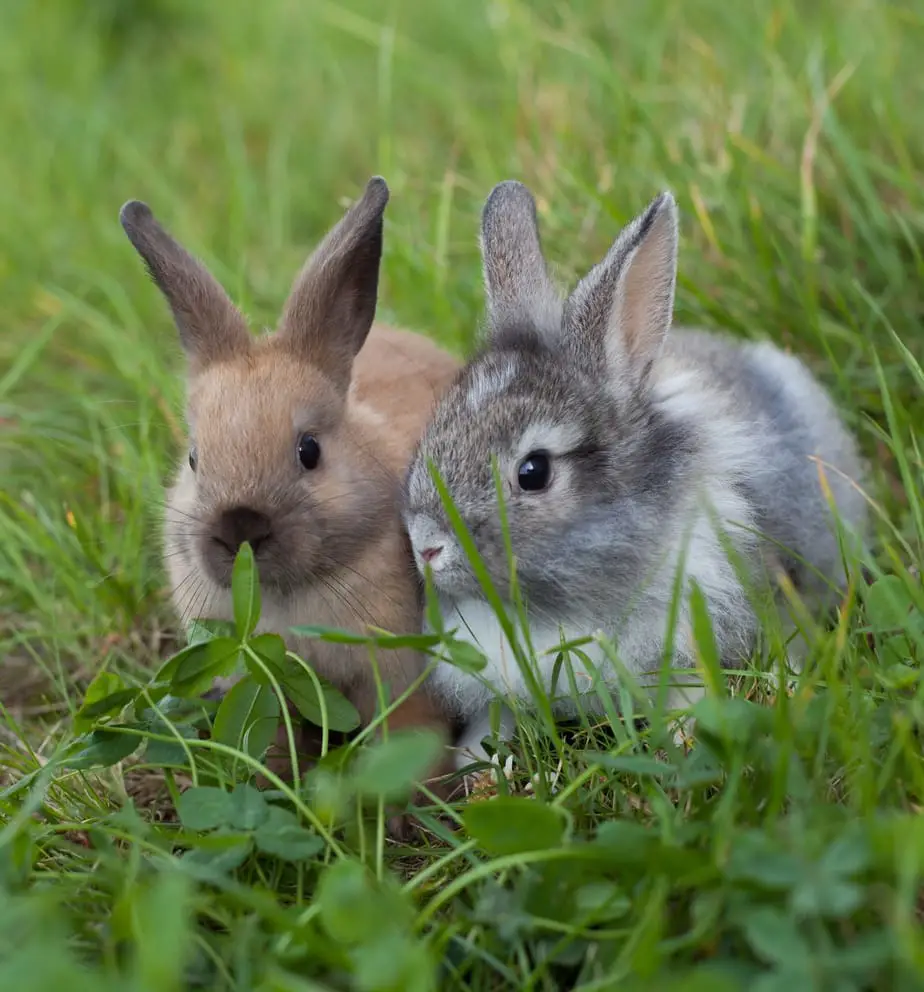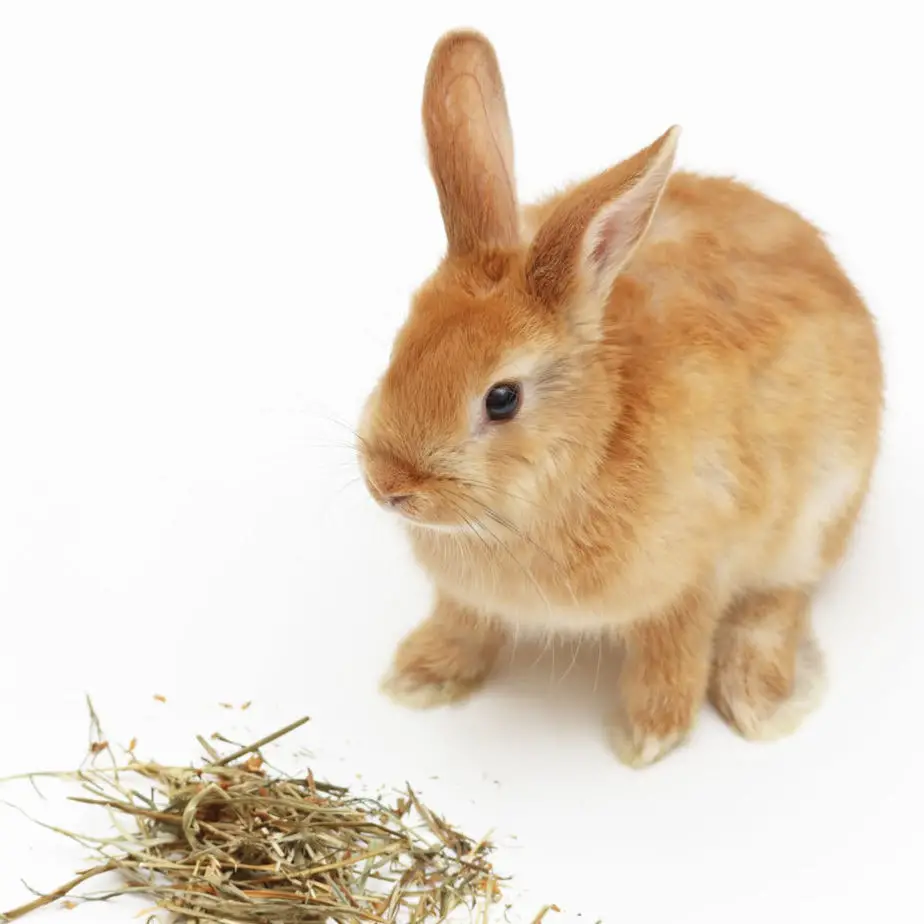
When we look at rabbits and hares, it’s easy to mistake one for the other. They’re both small, furry mammals with large ears, powerful hind legs, and cute furry tails! But these two are more different than you might expect.
Rabbits and hares are not categorized under the same species, or even genus, so they cannot successfully breed with each other. Hares and rabbits can both live in the wild, but hares have never been domesticated. Rabbits are smaller and are born without fur, while hares are larger.
One reason you may be asking yourself if rabbits and hares can mate, might be because your pet rabbit escaped. Do Pet Rabbits Come Back if They Escape? is an article I wrote that will help you attract your rabbit back to your home. This article can also help you recognize the reasons why your pet rabbit escaped in the first place and how to prevent it from happening in the future.
It’s easy to get rabbits and hares mixed up. Humans have made things harder by giving some of them misleading names, like calling hares “jackrabbits”. However, rabbits and hares have several fundamental differences that set them apart from each other. We’ll explore some of their similarities and differences, as well as some behaviors and characteristics that you can use to tell them apart.
Difference of Appearance

If you own a pet with soft fur, big ears, and a cottontail, it’s almost guaranteed that you have a rabbit. Hares are not domesticated animals and can’t be easily approached. They are skittish and nervous, and won’t make very good pets!
But if you’re out in your yard or taking a nature walk and see a furry critter bounding away, it could be a wild rabbit or hare. Both species can live in the wild, but they look and behave differently.
When it comes to telling apart rabbits and hares, some of the easiest ways to identify the animal is by looking at its appearance. While rabbits and hares have similar body structures, they also have several differences that can be used to identify one from the other.
First of all, look at the size. Rabbits are smaller than hares, generally speaking. It’s hard to classify all rabbits under one size category because of the wide variety of breeds, but usually, rabbits are about 14-19 inches long, while hares average 16-28 inches.
Hares also have longer, stronger legs than rabbits. Their ears are also larger and are always upright, while some rabbit breeds have floppy ears.
Both rabbits and hares have thick fur, but while rabbits maintain the same coat color all year-round, the fur of hares will change from grey/brown to white during the winter season. Both animals will go through seasonal fur molts in the spring and fall.
Speaking of fur, coloration is another way you can distinguish between rabbits and hares. Rabbit fur comes in a wide variety of colors, textures, and patterns, while hares are a bit more uniform. Generally speaking, hares have brown/grey fur with small black markings. The tips of their ears are usually black as well.
The coloration of hares may vary a bit, depending on the region they’re found in. Their fur generally matches the color of their surroundings to help them blend in better.
Difference of Behavior

Even though there are many physical identifiers between these two animals, the differences go below the skin as well. The behavior of rabbits and hares is another major way that outside viewers can tell them apart.
First of all, they have different living arrangements and shelter needs. Rabbits are burrowers that love the safety and security of underground burrows. If you have a pet rabbit, you may have noticed their tendency to burrow and dig.
DOES YOUR RABBIT LIKE ADVENTURE?
Since rabbits like to burrow and explore, reading my article How to Keep a Rabbit Outside: A Complete Guide will help you determine what is the proper amount of space for yoru pet while also providing adequate protection.
On the other hand, hares live above-ground and can be seen in nests. They are surface-dwellers instead of burrowers. They are also nocturnal, so they are more active at night.
These two animals have different approaches to danger. Both rabbits and hares are cautious animals who have to be on constant alert for predators and other threats. But while rabbits tend to burrow, hide, or freeze, hares are runners! Those long, powerful legs are put to good use when hares feel threatened.
They are also differently suited to outdoor environments. Rabbits and hares are both capable of swimming due to their light bones and strong legs, but hares are much more comfortable in the water. Rabbits will only swim as a survival instinct, and it can end up causing harmful stress, skin tearing, and hypothermia.
Hares, on the other hand, are comfortable in the water and can easily swim across bodies of water such as lakes, ponds, and streams.
The social structures of rabbits and hares are also quite different from each other. Rabbits are social and live in communities of 10-15 rabbits, usually with one dominant male. Hares are solitary, and only join up with each other when it’s time to mate.
This difference in community structure means that rabbits end up fighting for territory, mates, and dominance far more often than hares. Hares are content with isolation and hardly ever fight with each other. They simply pair up when it’s time to mate!
Difference of Diet

Hares and rabbits are both herbivores and can eat a variety of plants, fungi, grasses, berries, fruits, and vegetables. However, they also have their own preferences and dietary restrictions as well.
Both animals need a lot of fiber and grasses in their diets. This helps grind down their teeth and stimulate their digestive system. Grass makes up the majority of their diets, but rabbits prefer softer grasses while hares can eat things like twigs and bark. Now that’s what I call a fibrous meal!
Hares can also eat a few other things that rabbits can’t. Nuts and seeds are sometimes used as a supplement to a hare’s diet. Rabbits cannot eat these foods because they have a high-fat content and upset their sensitive digestive system.
Hares also have another method to get more out of their diet: eating their own droppings! While this might seem gross to us, hares need to get all the nutrition they can. Their stomachs aren’t as developed as other herbivores, such as cows and deer, so they don’t always absorb all the nutrients of their food before it’s been digested.
To make up for this, hares have evolved the ability to eat and digest their own droppings. This gives them a second chance to absorb nutrients that were only partially broken down before.
Both rabbits and hares tend to eat only above-ground food and won’t dig for root vegetables. They are physically capable of eating most of these (carrots, beets, parsnip, etc.) but the effort to dig it up is usually not worth it to these animals, so root vegetables don’t make up a significant portion of their diets in the wild.
Fruits, berries, and vegetables are used as supplements to rabbit and hare diets. These usually have a high sugar/fat content, as well as vitamins, minerals, and other trace elements that are good in moderation but can upset their stomach and cause health problems if too much is consumed.
Difference of Breeding and Life Cycle
As mentioned above, rabbits and hares have different social structures. Rabbits live in community groups, while hares are usually isolated from each other.
However, rabbits and hares both breed frequently. When they are domesticated, rabbits can breed anytime throughout the year. In the wild though, hares usually breed from January to August, while rabbits breed between December to June.
Don’t want any visitors or escapees? These 12 Effective Ways to Rabbit-Proof a Gate have been a lifesaver for our family. Here I give you all my tips on how to create a stronger enclosure that your rabbit can’t chew through or escape from, all while keeping him safe and comfortable!
Rabbits can have between four and eight litters each year, while hares only average two or three litters each year. Hares will carry their babies for about 40 days, while rabbits take about 31 days. Hares are born with open eyes and a coat of fur, while baby rabbits are hairless and sightless at birth.
Hares become independent at a younger age than rabbits, being fully weaned in less than a month, but it takes then a couple of years to become sexually mature. Rabbits, on the other hand, become sexually mature within their first year of life.
Female rabbits become sexually mature when they are 4-6 months old, while males are mature at 8-12 weeks.
Hares have an average lifespan of 4-8 years in the wild, but they can live up to 12 years in captivity. Wild rabbits live 6-7 years, while domestic ones can last 8-12 years. The maximum lifespan for both rabbits and hares is quite similar, but they will generally have shorter lives if they live in the wild.
Predators, disease, and a lack of food are all common causes of death for these animals. Some rabbits and hares are also hunted by humans for their meat and fur. Hares are said to have a gamier flavor than rabbits, which taste a bit like chicken!
For a recap of some of the main points in this article, take a look at this quick YouTube video. It highlights some of the key differences between rabbits and hares, as well as some ways you can distinguish between the two.
So at the end of the day, although rabbits and hares have many similarities, they are very different animals. They have different appearances, behaviors, habits, diets, and overall lifestyles. They are so far apart that they are literally in different genera!
Breeding the two animals together is not currently possible, and for those who enjoy the qualities of domestic rabbits, that might be a good thing!
